Ford Fiesta: Body Repairs - General Information / Sealer, Underbody Protection Material and Adhesives. Description and Operation
Adhesives
NOTE: The following illustrations are examples of structural adhesive application and are not all inclusive.
The correct adhesive bonding is essential to repairing the vehicle correctly. Adhesives are used in many areas of the body structure in place of welding. In addition to providing a structural bond between component, adhesives can also help prevent wind noise, water leaks, exhaust fumes and dust from entering the vehicle. They also provide anti-corrosion barriers.
Hood
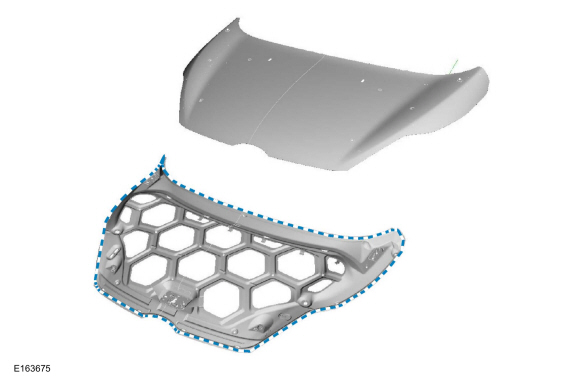
Front Door
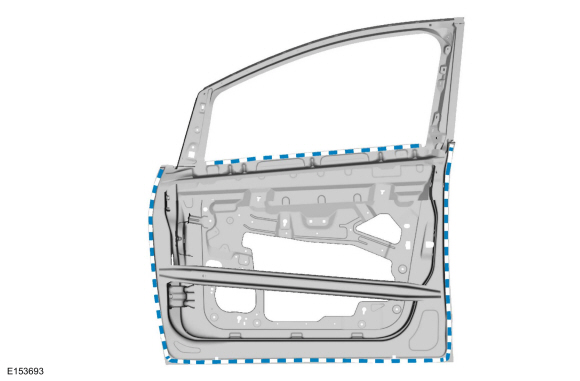
Rear Door
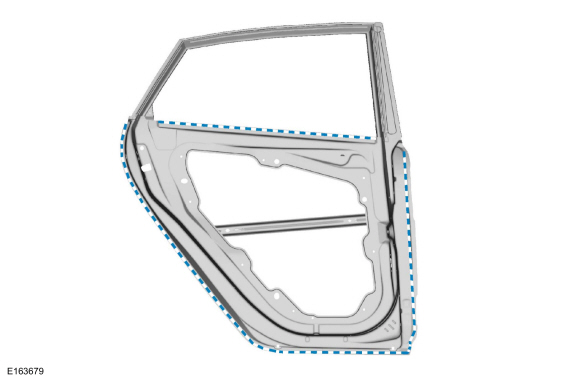
Liftgate
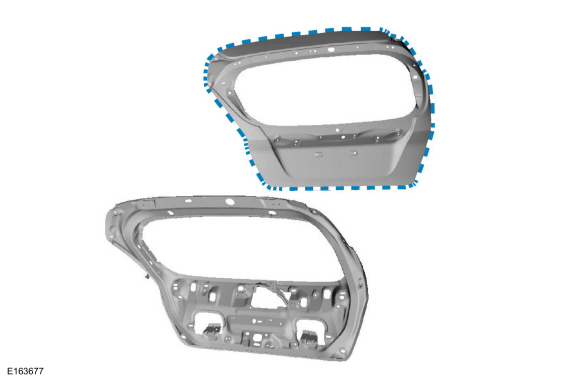
Luggage Compartment Lid
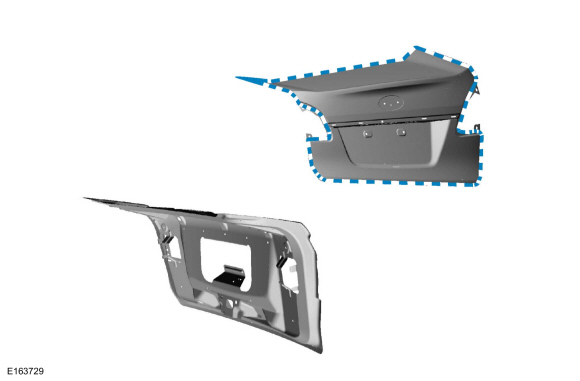
Roof Panel
NOTE: 4-door shown, 5-door similar.

Roof Panel with Roof Opening Panel
NOTE: 4-door shown, 5-door similar.

Sealers
The correct sealing of joints is essential to repairing the vehicle correctly. Sealers are used to prevent wind noise, water leaks, exhaust fumes and dust from entering the vehicle. They also provide anti-corrosion barriers. Sealers are applied to areas such as door and rear compartment hem flanges, wheelhouse, quarter outer, floor, cowl, roof and other panel-to-panel attaching points. The following joint sealers are recommended for use depending upon the application:
- Seam Sealer - Heavy-bodied, non-sag adhesive/sealer for use on standing cosmetic seams, truck bed seams, tooled door skin seams and floor pans.
Sealers should remain flexible after curing and must be paintable. Follow the manufacturer's directions for correct application of these materials.
Any damage to originally sealed joints should be repaired by resealing. Along with attaching points of new panels, open joints that require bridging of sealer to close a gap should be sealed using a heavy-bodied sealer.
NOTE: The following illustrations are examples of sealer application and are not all inclusive.
Hood

Front Door
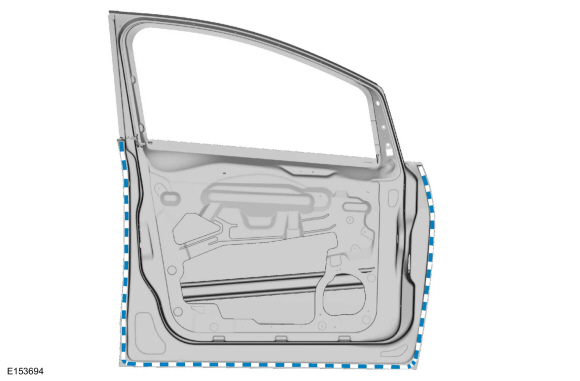
Rear Door

Roof
NOTE: 4-door shown, 5-door similar.

Roof Panel with Roof Opening Panel
NOTE: 4-door shown, 5-door similar.
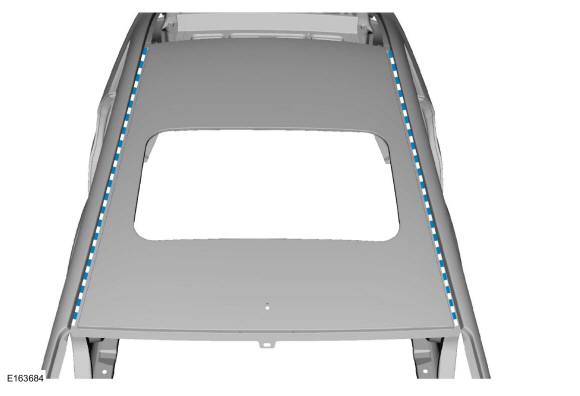
Liftgate
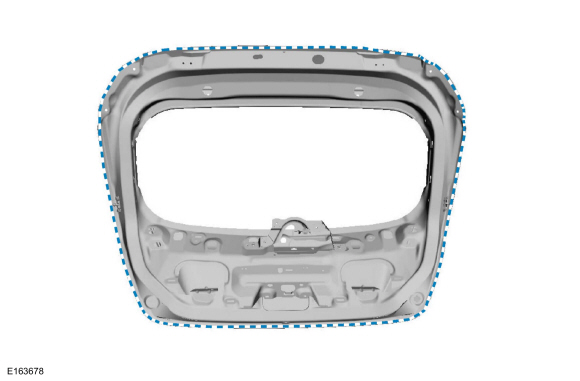
Luggage Compartment Lid
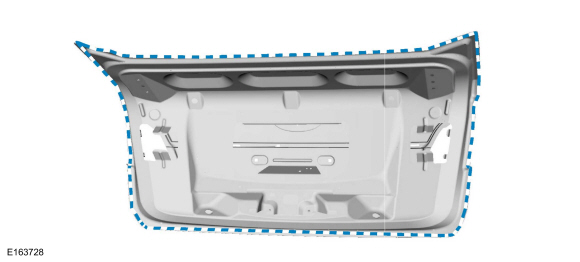
Floor Pan
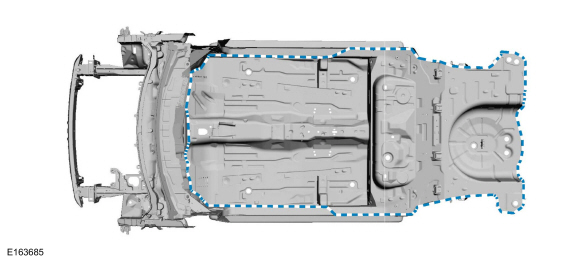
Underbody Protection Material
Underbody protection is necessary for permanent, elastic corrosion protection of vehicle underbodies. It is paintable, very durable and has good resistance to abrasion. This material may be applied in many manners. It may be sprayed, rolled or brushed on (obtain locally).
Floor Pan
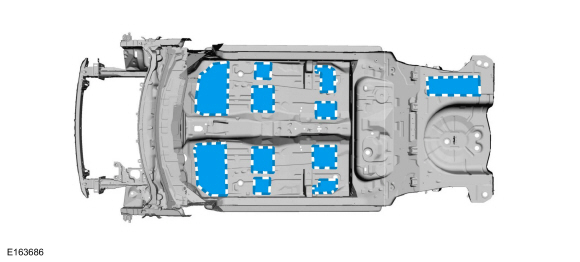
 Complete Panel Replacement/Partial Replacement. Description and Operation
Complete Panel Replacement/Partial Replacement. Description and Operation
Partial Replacement
Item
Description
1
Sectioning area
2
Manufacture weld joint
Decision Criteria
The following points a crucial to the decision of complete or partial replacement of the part(s)...
 Plastic Repairs. Description and Operation
Plastic Repairs. Description and Operation
Plastic Components
The
following illustration(s) are not all-inclusive of trim levels
available. The actual trim level of the vehicle will determine the
viability of carrying out a plastics repair...
Other information:
Ford Fiesta 2014 - 2019 Service Manual: Evaporative Emissions - Overview. Description and Operation
Overview The EVAP system prevents hydrocarbon emissions from entering the atmosphere by storing fuel vapors and routing the vapors to the engine to be consumed during normal engine operation. The EVAP system consists of: EVAP canister EVAP canister purge valve EVAP canister vent solenoid Fuel Tank Pressure (FTP) sensor and tube Easy Fu..
Ford Fiesta 2014 - 2019 Service Manual: Rear Door Alignment. General Procedures
Inspection Check the body to the rear door dimensions. Refer to: Body and Frame (501-26 Body Repairs - Vehicle Specific Information and Tolerance Checks, Description and Operation). Adjustment NOTE: LH side shown, RH side similar. NOTE: 5-door shown, 4-door similar. NOTE: Removal steps in this procedure may contain installation details. All..
Categories
- Manuals Home
- Ford Fiesta Service Manual (2014 - 2019)
- Front Subframe. Removal and Installation
- Camshafts. Removal and Installation
- Maintenance Schedules - Gasoline Engines. Description and Operation
- Engine. Assembly
- Service Information
Parking Brake Control. Removal and Installation
Removal
NOTE: Removal steps in this procedure may contain installation details.
Remove the floor console.Refer to: Floor Console (501-12 Instrument Panel and Console, Removal and Installation).
Remove the driver seat.
Refer to: Front Seat (501-10 Seating, Removal and Installation).
Remove the parking brake cable adjustment lock nut.
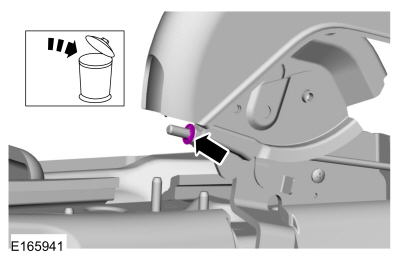 Loosen the parking brake cable adjustment nut.
Loosen the parking brake cable adjustment nut.
